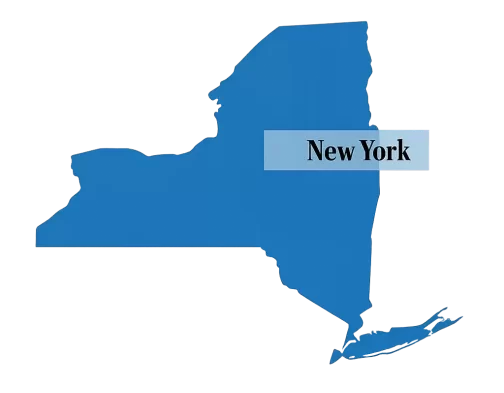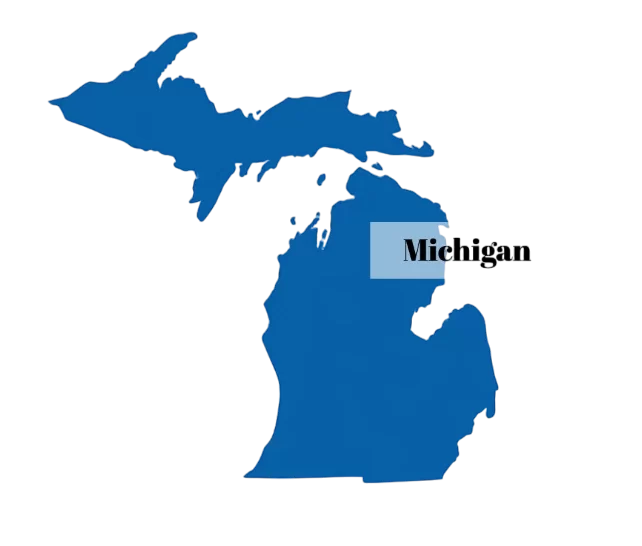A Complete Guide to Medicaid Medicaid is a crucial program in the United States that offers millions of people and families health coverage. It acts as a safety net for people who might not otherwise have access to reasonably priced healthcare because of budgetary limitations. This article will examine the complexities of Medicaid, including its background, eligibility requirements, benefits, and important role in providing long-term care for elderly and disabled individuals.
Key Takeaways
- Medicaid is a government program that provides health coverage to low-income individuals and families, as well as people with disabilities and seniors.
- The program has evolved since its inception in 1965, expanding to cover more people and services over time.
- Eligibility for Medicaid is based on income, household size, disability status, and other factors, and varies by state.
- Medicaid covers a wide range of benefits and services, including doctor visits, hospital stays, prescription drugs, and long-term care.
- Medicaid plays a crucial role in providing long-term care for seniors and people with disabilities, covering services such as nursing home care and home health aides.
The impact of Medicaid’s expansion, its difficulties, its significance in resolving healthcare disparities, and its interactions with other healthcare programs will also be covered. Lastly, we will examine Medicaid’s future and the enrollment & application processes. Medicaid is a combined federal-state program that offers low-income individuals and families health insurance. This program is intended to help people who might not be able to pay for medical care.
Children, parents, seniors, pregnant women, people with disabilities, & others make up the program’s diverse clientele. Federal guidelines must be followed even though each state manages its own Medicaid program with its own set of rules and regulations. Medicaid’s main objective is to guarantee that disadvantaged groups can obtain the healthcare they require.
Long-term care, mental health services, hospital stays, and preventive care are all included in this. Medicaid helps to improve health outcomes and lessen financial burdens for millions of Americans by offering these vital services. Medicaid’s early years. Medicaid initially concentrated on offering coverage to low-income individuals receiving cash assistance and families with children.
| Metrics | Data |
|---|---|
| Medicaid Enrollment | Over 70 million people |
| Medicaid Spending | Over 600 billion annually |
| Medicaid Coverage | Provides healthcare to low-income individuals and families |
| Medicaid Expansion | Implemented by 38 states and Washington D.C. |
Despite its limited initial scope, this was a critical first step in addressing the healthcare needs of vulnerable populations. Growth and Development. Medicaid has experienced substantial changes over time. The Children’s Health Insurance Program (CHIP) and pregnant women were among the additional eligible groups that were added to the program in the 1980s.
The goal of this expansion was to give more people access to healthcare services. the Affordable Care Act’s effects. By permitting states to extend their Medicaid programs to include more low-income adults, the Affordable Care Act (ACA) of 2010 further changed the program.
Enhancing access to healthcare services nationwide and lowering the number of uninsured people were the goals of this expansion. While each state has different requirements for Medicaid eligibility, applicants must generally fulfill these requirements. In order to be eligible for the program, people typically need to show that they have little money and few resources.
The Federal Poverty Level, or FPL, is used to determine eligibility in the majority of states and is revised yearly. Eligibility requirements for pregnant women and children are frequently more flexible, enabling higher income thresholds. Also, a number of states have extended Medicaid under the Affordable Care Act, making coverage available to adults earning up to 138% of the federal poverty level. Additional variables that could impact eligibility include residency, age, and disability status. Potential applicants should review the particular requirements of their state in order to determine their eligibility.
Medicaid offers a wide range of services and benefits that are intended to satisfy its members’ medical requirements. All states are required to offer certain benefits, but states are free to choose which particular services are covered by their programs. Inpatient & outpatient hospital services, physician services, X-ray and laboratory services, nursing home services, home health care, and transportation to doctor’s appointments are a few examples. Many states provide optional services like prescription medication coverage, dental & vision care, & mental health services in addition to required benefits. Medicaid’s wide range of services guarantee that participants receive comprehensive care catered to their specific requirements.
Maintaining general health & managing chronic conditions require this all-encompassing strategy. Medicaid’s long-term care services for the elderly & disabled are among its most important functions. People may need assistance with everyday tasks like eating, dressing, & bathing as they get older or develop disabilities. Numerous long-term care options, such as assisted living facilities, home-based care services, & nursing home care, are covered by Medicaid. For many families who might find it difficult to pay for the high expenses of long-term care, this support is essential.
Medicaid helps people with disabilities and the elderly get the care they require while staying in their homes or communities whenever possible by paying for these costs. Families experience less financial strain as a result, and their quality of life is improved.
Medicaid frequently collaborates with other healthcare initiatives to offer people complete coverage.
For instance, many Medicaid-eligible individuals may also be eligible for Medicare, a federal program that offers health coverage to individuals 65 and older or those with specific disabilities.
Medicaid can assist in paying deductibles or copayments in certain situations that Medicare does not cover. Medicaid also works with initiatives like CHIP to guarantee that children from low-income households get the medical care they require. A more integrated healthcare system that meets the needs of diverse populations while optimizing available resources is made possible by this partnership.
Millions of Americans now have much better access to healthcare thanks to the Affordable Care Act’s Medicaid expansion. Enrollment among previously uninsured low-income adults increased significantly in states that decided to expand their programs. Improved access to routine checkups, necessary treatments, and preventive care services has resulted from this expansion.
Medicaid expansion has been shown to improve population health outcomes and lower the number of uninsured people in states.
Medicaid expansion has been essential in lowering healthcare access disparities and guaranteeing that vulnerable populations receive timely medical attention by expanding coverage to more people.
Medicaid still faces many difficulties & disputes in spite of its achievements. A primary concern is financing; states frequently find it difficult to balance their budgets while still offering sufficient Medicaid services as healthcare costs continue to rise. As a result, some states are thinking about reducing or altering their programs, which might have a detrimental effect on enrollees. The discussion of Medicaid expansion is another contentious issue. For ideological or political reasons, some states have chosen not to extend their ACA programs. This choice maintains disparities in health outcomes and denies many low-income people access to necessary healthcare services.
In order to address healthcare disparities among underserved populations, Medicaid is essential. The program helps close access gaps to care that frequently arise from socioeconomic factors by offering coverage to low-income individuals & families. For rural & communities of color, who might encounter additional obstacles to accessing healthcare, this is especially crucial. Medicaid’s emphasis on preventive care also helps lower long-term health problems by making sure people get timely medical care before their conditions get worse. Medicaid makes a substantial contribution to enhancing general public health outcomes in a variety of communities by tackling these disparities head-on. Medicaid will change along with healthcare needs.
Potential program modifications could involve modifying eligibility standards or benefits provided in response to changing economic or demographic circumstances. Also, Medicaid’s operations may undergo major changes as a result of the ongoing state & federal discussions about healthcare reform. In order to increase efficiency and preserve the standard of care for enrollees, Medicaid’s future is probably going to continue to prioritize the integration of technology into healthcare delivery systems. As policymakers navigate these changes, they will have to strike a balance between the need for comprehensive coverage & budgetary constraints. Although state-specific requirements may differ, applying for Medicaid typically entails filling out an application that asks about household size, income, & other pertinent information.
Numerous states provide online applications via the Health Insurance Marketplace created by the Affordable Care Act or their own health department websites. Following submission, an application is reviewed, and eligibility is assessed using state-specific standards. Those who are accepted will be notified by their local Medicaid office about their coverage options and how to obtain services. In conclusion, comprehending Medicaid is necessary to appreciate its vital role in offering millions of Americans health insurance.
Rockaway Home Care has been providing high-quality home care services in New York for more than 20 years, & they are aware of how crucial accessible healthcare options are for the elderly and disabled. As a home care company that provides compassionate support, Rockaway Home Care is dedicated to assisting customers in meeting their healthcare requirements and making sure they get the greatest care possible in their homes.
FAQs
What is Medicaid?
Medicaid is a joint federal and state program that provides health coverage to low-income individuals, including children, pregnant women, elderly adults, and people with disabilities.
Who is eligible for Medicaid?
Eligibility for Medicaid varies by state, but generally includes low-income individuals and families, pregnant women, children, elderly adults, and people with disabilities.
What services does Medicaid cover?
Medicaid covers a wide range of medical services, including doctor visits, hospital stays, prescription drugs, mental health services, and long-term care.
How is Medicaid funded?
Medicaid is funded jointly by the federal government and individual states. The federal government matches a percentage of each state’s Medicaid spending, with the exact percentage varying based on the state’s income level.
How do I apply for Medicaid?
To apply for Medicaid, individuals can contact their state’s Medicaid office or apply through the Health Insurance Marketplace. Eligibility requirements and application processes may vary by state.




